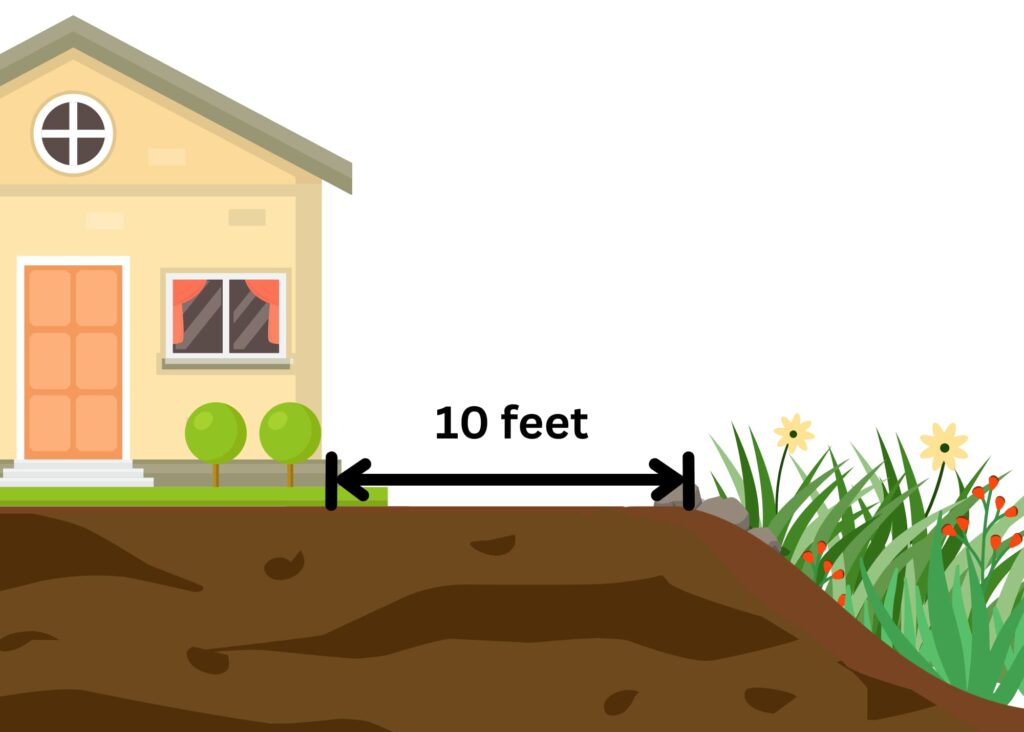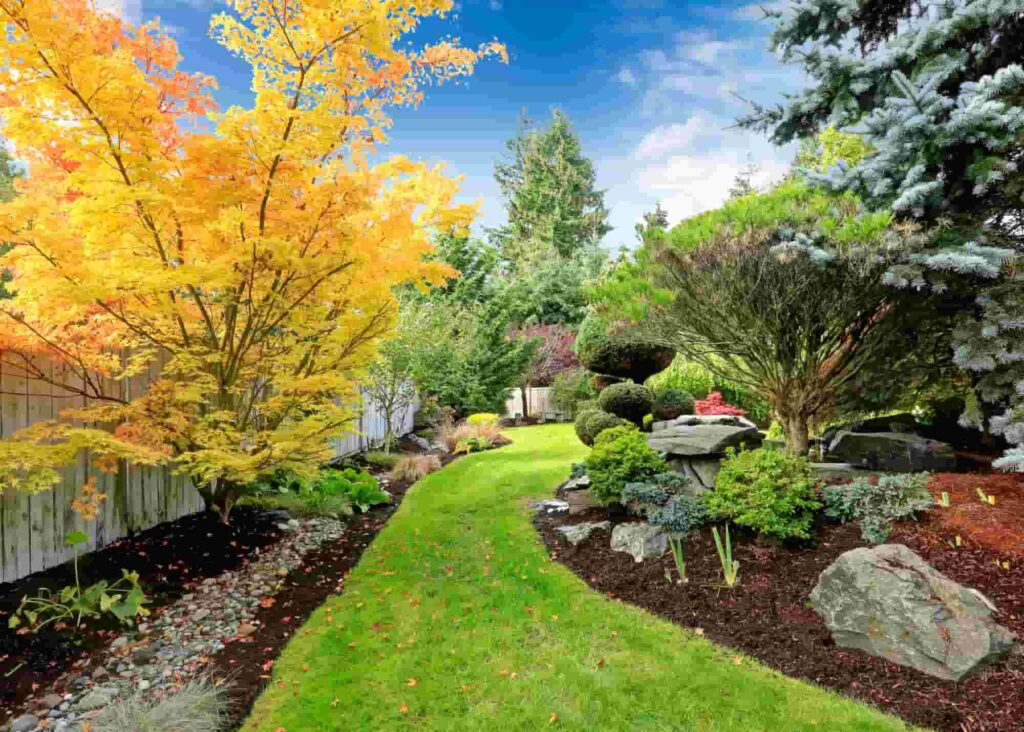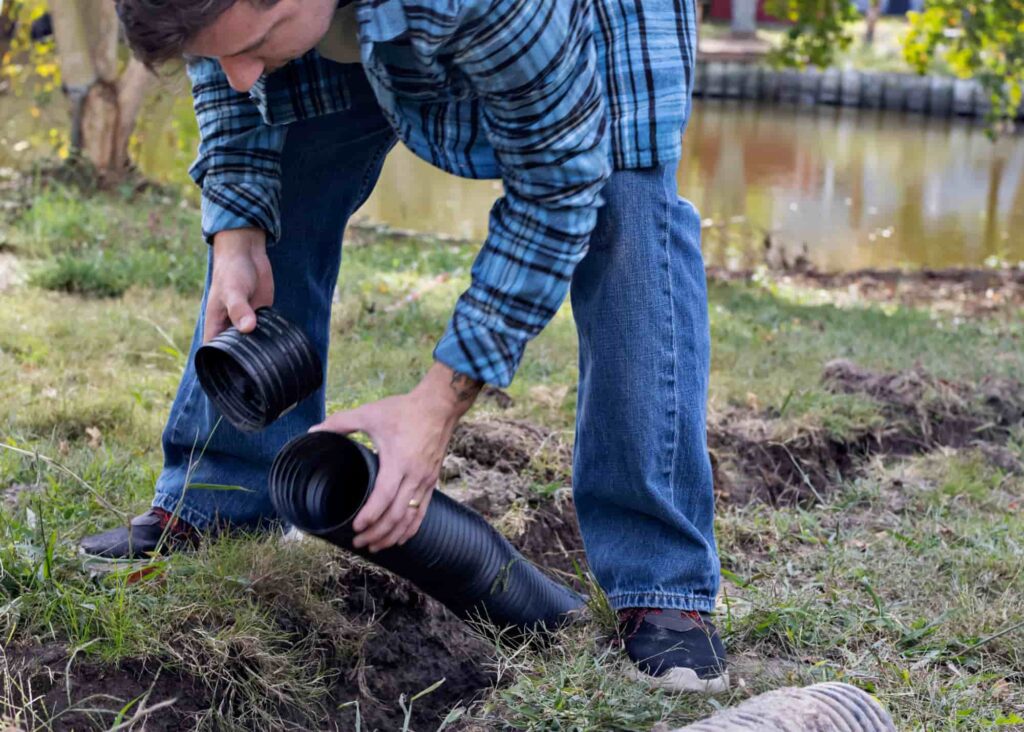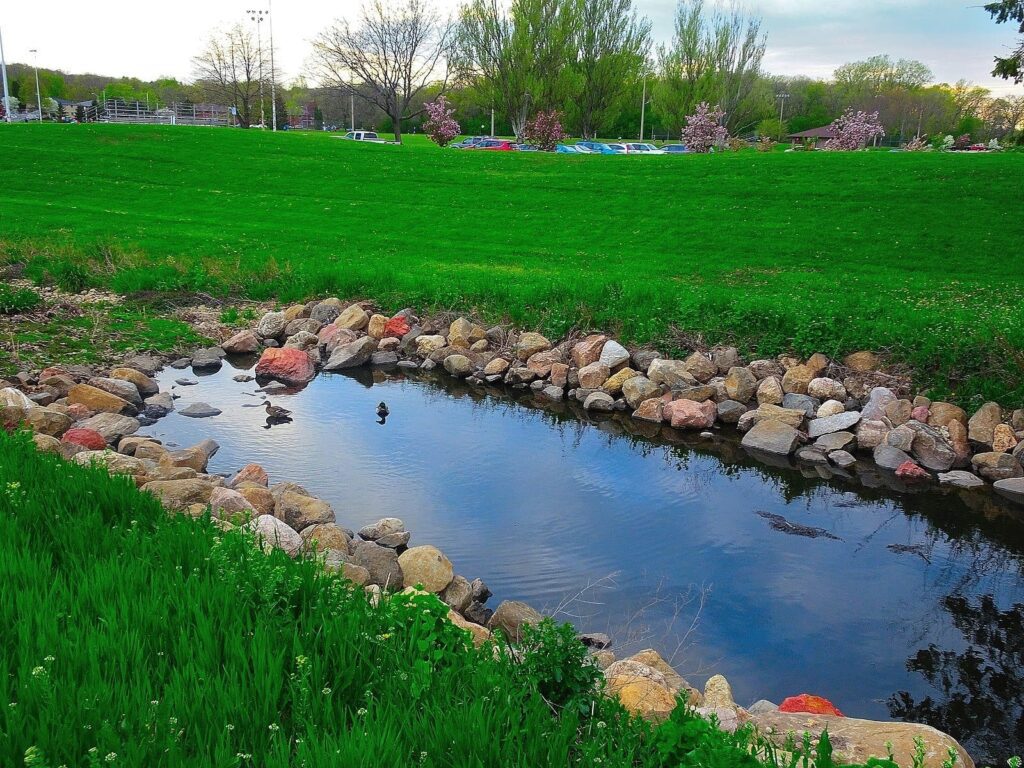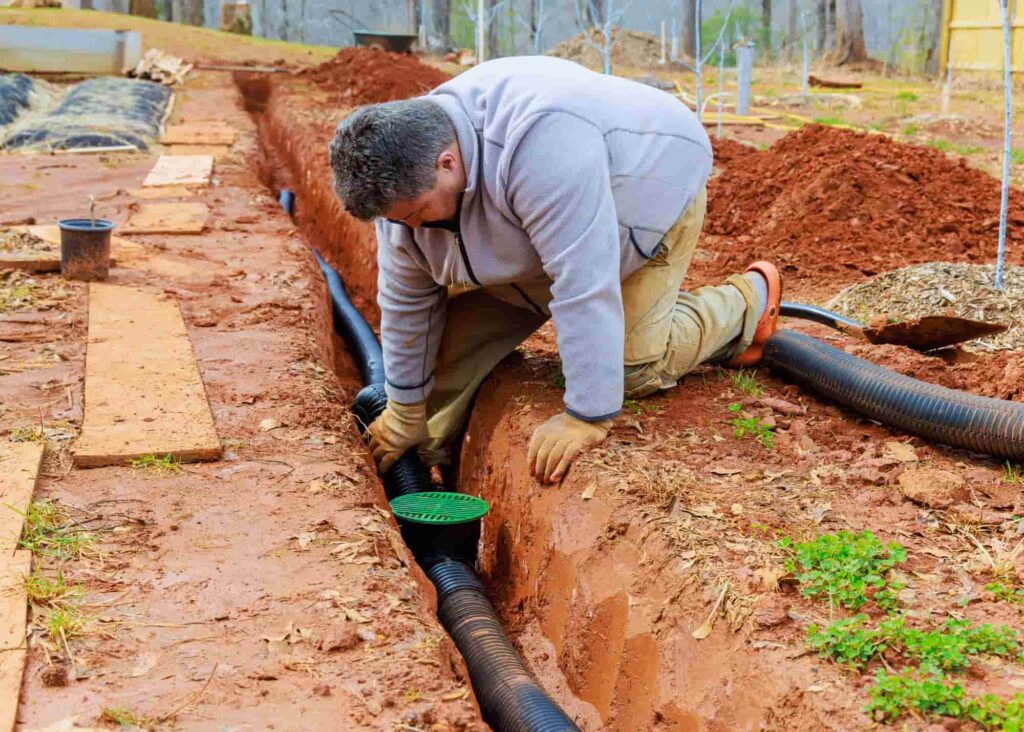What are Rain Gardens
A rain garden is a shallow, planted depression designed to capture and filter stormwater runoff from impervious surfaces like roofs, driveways, and patios. Its primary purpose is to manage rainwater naturally, reducing runoff and improving water quality in the surrounding area.
How Rain Gardens Work
Capturing and filtering runoff
Rain gardens are simple, but they’re pretty ingenious! They work by collecting rainwater and allowing it to slowly infiltrate into the ground. As water flows into the garden, it’s temporarily held in the depression. The garden’s soil and plants then filter out pollutants as the water percolates through the soil layers.
Native plant selection
Native plants are crucial to a rain garden’s success. These plants are adapted to local conditions and have deep root systems that help absorb water and filter contaminants. They also provide habitat for local wildlife and pollinators.
Benefits of Rain Gardens for Your Landscape
Improved Water Management
Rain gardens significantly reduce stormwater runoff, helping to prevent erosion and flooding. They can absorb up to 30% more water than a traditional lawn, making them an effective tool for managing excess rainwater on your property.
Environmental Benefits
By filtering pollutants from runoff, it improve local water quality. They also support biodiversity by providing habitat for birds, butterflies, and beneficial insects. Additionally, they help recharge groundwater supplies, contributing to overall ecosystem health.
Aesthetic Value
Rain gardens can be beautiful landscape features, offering vibrant colors and textures throughout the seasons. With proper design, they can enhance your property’s visual appeal while serving a practical purpose.
Cost Savings
By reducing the need for irrigation and minimizing water runoff, it can lead to lower water bills. They also require less maintenance than traditional lawns, potentially saving on lawn care costs over time.
Rain Garden Designs for Your Property
Choosing the Right Location
Select a spot at least 10 feet away from your home’s foundation. The area should have a natural slope to direct water flow. Avoid areas with underground utilities or septic systems.
Sizing Your Rain Garden
The size of your rain garden depends on the amount of runoff it will receive. A general rule is to make it about 20-30% of the size of the area draining into it. For most residential properties, a rain garden between 100-300 square feet is just about the right size.
Selecting Plants for Your Rain Garden
Choose native plants adapted to your local climate. Divide your garden into three zones based on moisture levels:
Plants for wet zones
These plants should tolerate standing water. Examples include swamp milkweed, blue flag iris, and cardinal flower.
Plants for transition zones
Plants here should handle occasional flooding. Consider black-eyed susans, purple coneflower, and switchgrass.
Plants for dry zones
Edge your garden with drought-tolerant plants like little bluestem, butterfly weed, and prairie dropseed.
Rain Gardens vs. Traditional Landscaping
Water Conservation Comparison
Rain gardens significantly outperform traditional lawns in water conservation. They can absorb up to 30% more water than a typical grass lawn, reducing the need for irrigation.
While traditional landscapes often require frequent watering, especially during dry periods, rain gardens are designed to be self-sustaining once established, relying primarily on natural rainfall.
Maintenance Requirements
Traditional landscaping often demands regular mowing, fertilizing, and pest control. In contrast, rain gardens require less frequent maintenance. After the initial establishment period, they typically need only occasional weeding and pruning.
This lower maintenance approach not only saves time but also reduces the use of potentially harmful chemicals.
Environmental Impact
Rain gardens have a far more positive environmental impact than traditional landscaping. They filter pollutants from runoff, support local wildlife, and help recharge groundwater. Traditional lawns, on the other hand, often contribute to water pollution through fertilizer and pesticide runoff, and provide little habitat value for native species.
Common Misconceptions About Rain Gardens
Mosquito Breeding Concerns
A common worry is that rain gardens will become breeding grounds for mosquitoes.
However, properly designed rain gardens drain within 24-48 hours, which is not enough time for mosquito larvae to develop. In fact, rain gardens can support natural mosquito predators like dragonflies.
Flooding Worries
Some homeowners fear that it might increase flooding risk. In reality, rain gardens are designed to reduce flooding by absorbing and slowly releasing excess water. They help prevent water from pooling in unwanted areas or overwhelming storm drains.
Appearance and Neatness
There’s a misconception that rain gardens look wild or unkempt. With proper design and plant selection, rain gardens can be aesthetically pleasing landscape features. They can be tailored to various styles, from naturalistic to more formal, and provide year-round visual interest with a diverse array of plants.
Rain Gardens in Different Climate Zones
Adapting Rain Garden Design for Your Region
Rain gardens can be adapted to various climate zones, from arid regions to areas with high rainfall.
In drier climates, focus on deeper basins to maximize water retention and choose drought-tolerant plants.
In wetter regions, ensure excellent drainage and select plants that can handle both wet and dry conditions. Consider local precipitation patterns when determining the garden’s size and depth.
Plant Selection for Various Climates
Choose native plants adapted to your specific climate:
Arid regions: Consider drought-resistant plants like salvias, yarrow, and native grasses.
Temperate zones: Opt for versatile plants such as coneflowers, black-eyed susans, and switchgrass.
Tropical areas: Select moisture-loving plants like elephant ears, canna lilies, and native ferns.
Cold climates: Use hardy perennials like asters, joe-pye weed, and sedges that can withstand freezing temperatures.
Incorporating Rain Gardens into Larger Landscape Designs
Complementing Other Garden Features
Integrate your rain garden with existing landscape elements:
- Use it as a transition between formal and natural areas.
- Incorporate paths or stepping stones for access and visual interest.
- Add decorative rocks or small water features to enhance aesthetics.
- Use the rain garden to frame views or create focal points in your landscape.
Creating a Cohesive Landscape Plan
To ensure your rain garden fits seamlessly into your overall landscape:
- Match the garden’s style to your home’s architecture and existing landscaping.
- Use repeating plant varieties or colors to create unity throughout your yard.
- Consider the garden’s appearance in all seasons when selecting plants.
- Plan for growth and maturation of plants over time.
- Integrate the rain garden with other sustainable landscaping practices like native plant gardens or xeriscaping for a comprehensive eco-friendly design.
Embracing Sustainable Landscaping with Rain Gardens
At Ware Landscaping, we love rain it because they represent a perfect blend of functionality and beauty in landscape design.
By mimicking nature’s water management systems, they offer an eco-friendly solution to stormwater runoff while enhancing the aesthetic appeal of your property. As we face growing environmental challenges, incorporating rain gardens into our landscapes is a small but significant step towards creating more sustainable, resilient communities.
Whether you’re looking to solve drainage issues, reduce your environmental footprint, or simply add a unique and beautiful feature to your yard, it are a super, versatile option. They not only benefit your immediate property but contribute to the overall health of our local ecosystems and waterways.
Ready to transform your landscape with a rain garden? Ware Landscaping is here to help!
At Ware Landscaping, we’re passionate about creating beautiful, sustainable landscapes that work in harmony with nature. Our expert team can design and install a custom rain garden that perfectly suits your property and personal style. From selecting the ideal location to choosing the right plants for your climate, we’ll guide you through every step of the process.
Don’t wait to start enjoying the benefits of a it. Contact Ware Landscaping today for a consultation and take the first step towards a more sustainable, beautiful landscape. Let’s work together to create a garden that’s good for your property and the planet!
Call us at 630-912-7691 or visit our website to schedule a free consultation. Revitalize your outdoor space with Ware Landscaping – where sustainability meets beauty.


